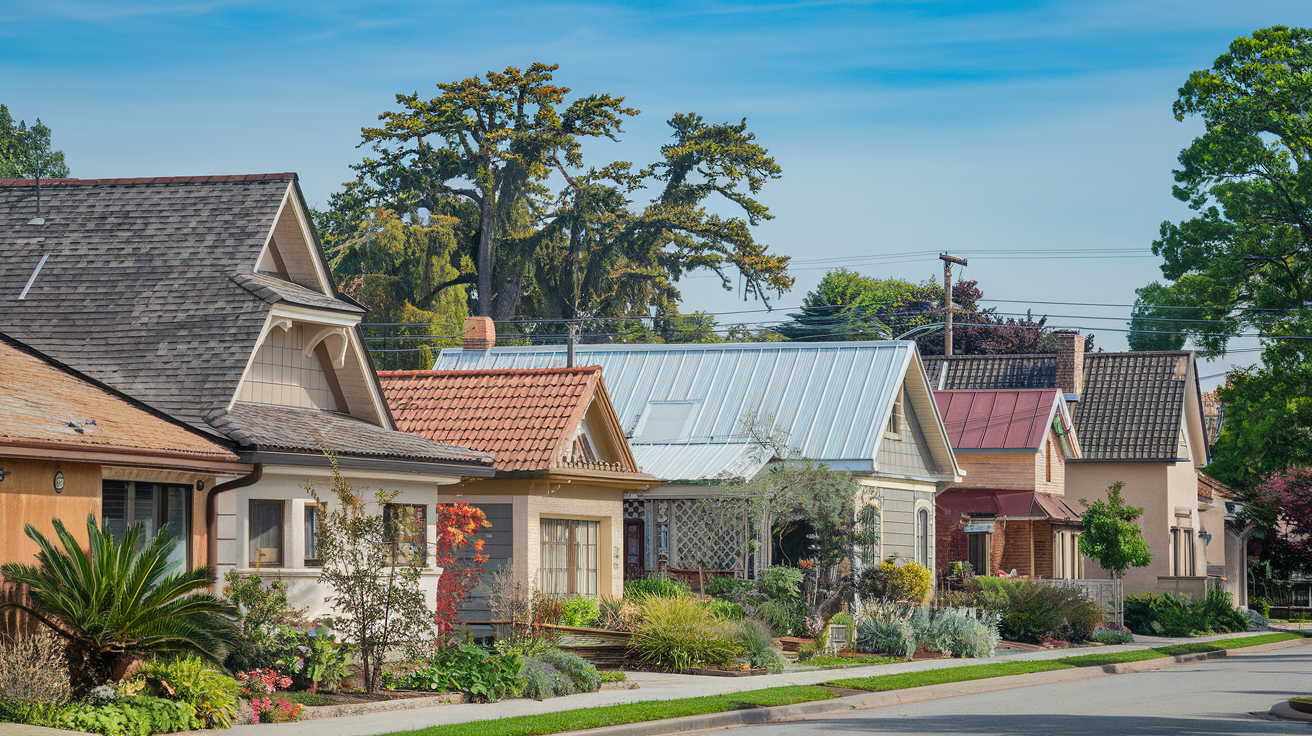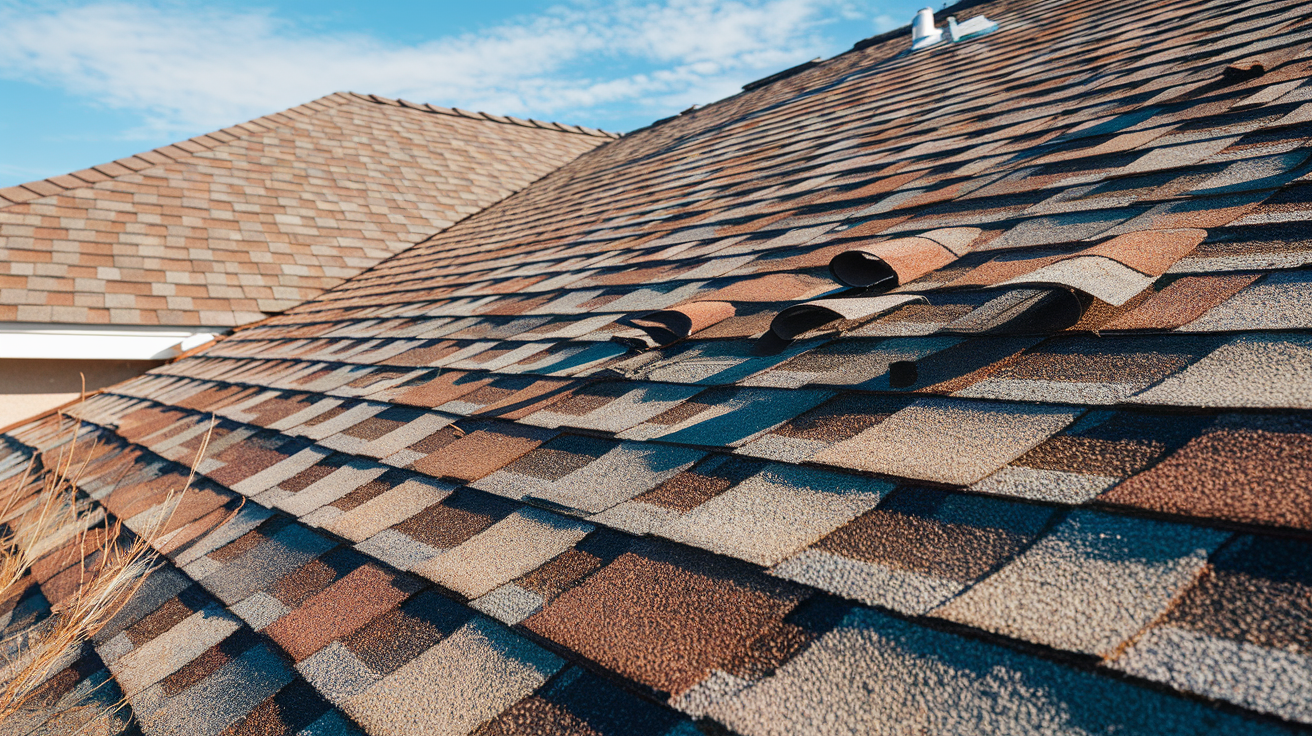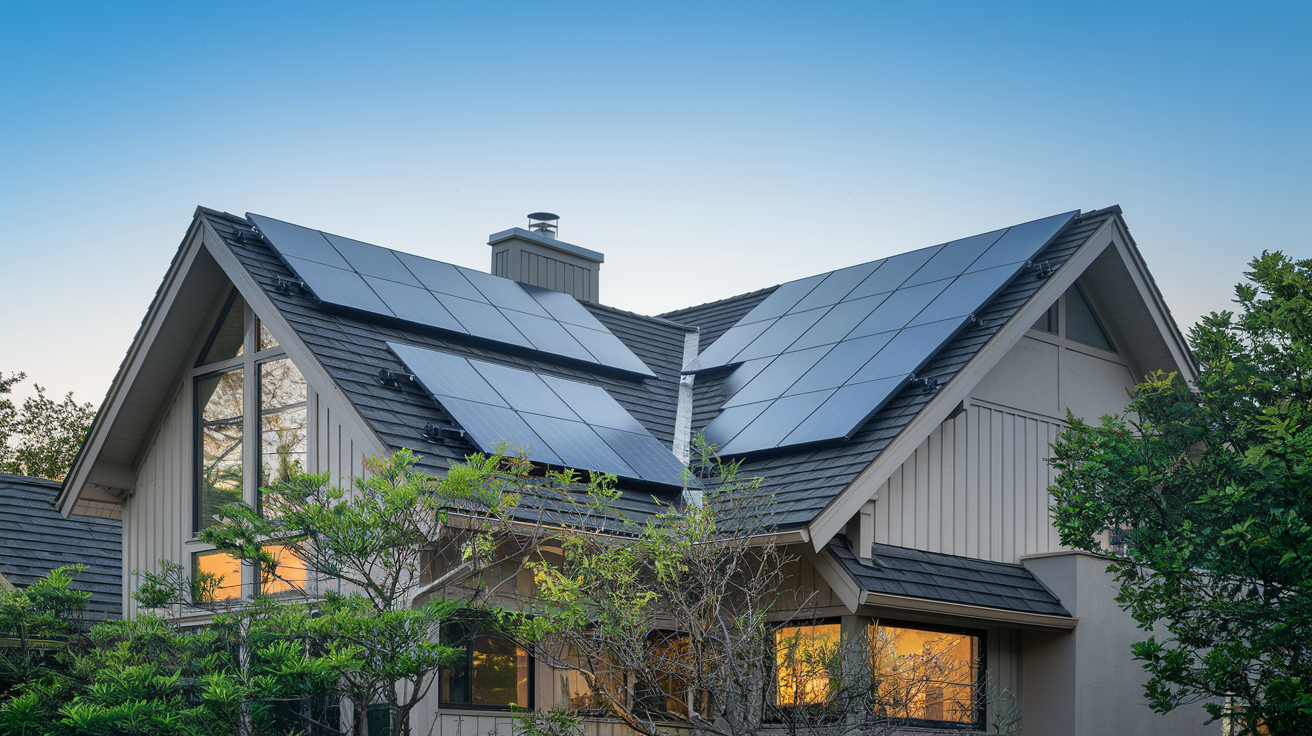Extend Your Roof's Life: 7 Expert Tips to Save Thousands in Repairs
Your roof is more than just shingles and tiles - it's your home's first line of defense against nature's harshest elements. Yet many homeowners discover too late that their roof is failing, leading to costly repairs averaging $985 to $1,649. The good news? With proper maintenance, you can prevent up to 90% of premature roof failures and add 20-30 years to your roof's life.
Whether you have a newly installed roof or are maintaining an aging one, understanding how to protect this crucial investment is essential. From choosing the right materials to implementing preventative maintenance strategies, this guide will walk you through proven methods to maximize your roof's lifespan and protect your home.
In this comprehensive guide, you'll learn how different roofing materials perform, what factors impact their longevity, and practical steps you can take to prevent common problems. We'll explore region-specific challenges and provide cost-effective solutions that work for any budget.
- Factors Affecting Roof Lifespan
- Common Roof Issues and Solutions
- Essential Roof Maintenance Tasks
- Regional Considerations for Roofing
- Cost Implications and Budgeting
Factors Affecting Roof Lifespan
Understanding the factors that impact a roof's lifespan is crucial for maximizing your investment. Many elements contribute to how long a roof protects your home. Knowing these factors helps you make informed decisions about your roof.
Material Lifespans and Quality Variations
The roofing material you choose is a primary factor in how long your roof lasts. Asphalt shingles are a common, affordable choice. They typically last 15-30 years, depending on quality. Basic 3-tab asphalt shingles last 20-22 years. Dimensional asphalt shingles, which have a textured look, last 25-28 years. Premium architectural shingles last even longer, 25-35 years. Metal roofs are known for durability, lasting 40-70 years with proper maintenance. Regular roof maintenance can prevent up to 90% of early roof failures, extending roof life by 20-30 years. For ultimate longevity, slate or tile roofs can last 50-100 years, and some slate roofs last up to 200 years. However, these materials have a higher upfront cost. Wood shingles have a shorter lifespan of 25-30 years. Consider the costs and benefits of each material to find the best fit for your needs. Get Your Roof Assessment
| Material | Lifespan (Years) | Cost Implication |
|---|---|---|
| Asphalt Shingles | 15-30 | Affordable |
| Metal Roofs | 40-70 | Higher Cost |
| Slate/Tiles | 50-200 | Highest Cost |
| Wood Shingles | 25-30 | Moderate Cost |

Climate and Environmental Impacts
Your local climate and environment significantly affect your roof's lifespan. Extreme weather, like heavy snow, high winds, or intense sun, can cause faster wear and tear. Temperature changes make roofing materials expand and contract, causing cracks and damage. Humid climates can lead to mold and algae growth, weakening the roof. Understanding your local climate helps you choose the right materials and maintenance plan for a more durable roof. While climate is a key factor, material quality and installation also matter. Even in a mild climate, a poorly installed roof may fail sooner than a well-maintained roof in a harsher climate.
Climate Impact
- ❄️ Snow & Ice: Increase weight, risk of leaks.
- 🌬️ High Winds: Uplift, shingle loss.
- ☀️ Intense Sun: UV damage, material fading.
- 🌧️ Humidity: Mold, algae growth.
Environmental Solutions
- 🛡️ Use durable materials.
- 🔧 Regular maintenance checks.
- 🌿 Mold and algae prevention.
- 🔄 Proper ventilation systems.
Importance of Proper Installation
Choosing the right materials and considering the climate is important, but how well your roof is installed is just as critical for its lifespan. Poor installation leads to leaks, weather damage, and structural problems, shortening the roof's life. Early intervention can sometimes extend the life of a poorly installed roof. This includes professional repairs, preventative maintenance, weather protection upgrades, and better ventilation. Proper ventilation regulates temperature and moisture in the attic, preventing ice dams and rot that can damage the roof. Hire experienced professionals who follow best practices for installation, including proper placement of materials and essential components like ventilation and insulation. Investing in a skilled contractor ensures long-term roof performance.
Common Roof Issues and Solutions
Maintaining your roof is crucial for protecting your home. Even small problems can become expensive repairs if ignored. Addressing common roof issues early can significantly extend its lifespan and protect your home from the elements. This section explores common problems like leaks, moss and algae growth, and shingle and tile damage, and offers practical solutions. Consider scheduling a Get Your Roof Assessment to identify potential issues early.
Identifying and Fixing Leaks
Roof leaks are a common and potentially serious problem for homeowners. Water stains on ceilings or walls are often the first signs of a leak. It's important to address leaks quickly to prevent further damage, like rotting wood and weakened supports. Leaks can result from several issues: damaged shingles, poorly installed flashing, or clogged gutters. Damaged shingles allow water to penetrate the roof, while poor flashing lets water seep in around chimneys, vents, or skylights. Clogged gutters cause water to overflow onto the roof and into the house.
Finding the Source of Leaks
To fix a leak, you first need to find its source. This might involve inspecting the roof and attic. Look for cracked, curled, or missing shingles. Missing granules, which protect shingles from UV rays, can also indicate a problem. Check the flashing around chimneys, vents, and skylights for gaps or tears. Make sure your gutters are clear of leaves and twigs.
Repairing Leaks
Once you've found the source of the leak, you can start repairs. Replace damaged or missing shingles. Reseal flashing with roofing cement or sealant. Clean your gutters to allow proper drainage. If the damage is extensive, a full roof replacement might be more cost-effective than multiple repairs. Learn more about roof maintenance for a comprehensive guide to identifying and addressing roof leaks.
Managing Moss and Algae Growth
Moss and algae growth on roofs isn't just an eyesore. It can also cause structural damage if left untreated. These organisms hold moisture, which can break down roofing materials over time, shortening your roof's lifespan. Regular cleaning is key to preventing damage.
Removing Algae
A mixture of water and bleach can effectively remove algae. A common solution is 4 gallons of water to 1 gallon of bleach.
Removing Moss
Moss should be removed by hand to avoid damaging shingles. Carefully pull or scrape off the moss without disturbing the shingles.
Preventing Future Growth
Installing zinc or copper strips at the roof's peak can prevent future moss and algae growth. Rainwater reacts with these metals, creating a barrier that inhibits moss growth. This preventative measure can save you time and effort in the long run.
Repairing Shingle and Tile Damage
Damaged shingles and tiles are often easy to spot, but they're also easy to overlook. Cracks, curling, or missing pieces expose the roof deck to weather, leading to leaks and further damage. Regular roof inspections, especially after severe weather, are essential.
When to Inspect
Inspect your roof at least twice a year—once in spring and once in fall. You should also inspect after storms, hail, or high winds. This helps you catch damage early and prevent bigger problems.
Repairing Shingles
Replace broken or missing shingles as soon as possible. If many shingles are damaged, it might be more economical to replace the entire roof.
Repairing Tiles
For tile roofs, address cracked or displaced tiles quickly to prevent water damage. You can often replace individual tiles. For extensive damage, professional repair services might be necessary to ensure the roof's integrity and longevity.
When to Call a Professional
For both shingle and tile roofs, professional help can ensure proper repairs and identify any underlying issues, like damage to the roof deck or structure.
Essential Roof Maintenance Tasks
Regular maintenance is critical for extending the life of your roof and protecting it from the elements. A consistent maintenance schedule can prevent up to 90% of premature roof failures and extend a roof's lifespan by 20 to 30 years. Considering that a roof typically lasts between 25 and 50 years, depending on the material and quality, regular maintenance significantly impacts its longevity. This section explores essential maintenance tasks every homeowner should consider. These include seasonal inspection checklists, gutter cleaning, debris removal, and maintaining ventilation systems. By following these guidelines, you can ensure your roof remains in top condition for years. Get Your Roof Assessment can help provide a detailed evaluation of your roof's current condition.
Seasonal Inspection Checklists
Thorough inspections at least twice a year are crucial for finding and addressing potential issues before they worsen. Spring and fall are ideal for these inspections, allowing you to prepare for summer and winter weather.
| Season | Inspection Focus | Common Issues |
|---|---|---|
| Spring | Post-winter damage, debris removal | Leaks, damaged shingles |
| Fall | Prepare for winter, clear gutters | Clogged gutters, moss growth |
Gutter Cleaning and Debris Removal
Clogged gutters can cause water buildup, damaging your roof and foundation. This can lead to expensive repairs, affecting your roof, walls, and landscaping. Regular gutter cleaning is essential to prevent these problems. Aim to clean your gutters at least twice a year, ideally during seasonal inspections.
Gutter Cleaning Frequency for Heavy Tree Cover
If you live in an area with many trees, you may need to clean your gutters more often. Remove leaves, twigs, and other debris that block water flow. Installing gutter guards can reduce cleaning frequency by preventing debris buildup.
Downspout Placement
Ensure downspouts direct water away from your foundation to avoid water damage and erosion. Ideally, water should be directed at least five feet away from the foundation. This prevents water from seeping back and causing problems. Learn more about roof maintenance for tips on proper drainage.
Maintaining Ventilation Systems
Proper ventilation is vital for a healthy roof. It regulates temperature and moisture, preventing mold and ice dams.
Checking for Vent Blockages
Check your attic and roof vents for blockages and clear any obstructions to ensure good airflow. Consider upgrading to energy-efficient ventilation systems to improve air circulation and extend your roof's life. Proper ventilation is especially important because roofs contribute to a significant portion of heat gain in homes.
Benefits of Proper Ventilation
Regular ventilation maintenance keeps your roof in good condition and improves energy efficiency. This can lower energy bills by reducing strain on your heating and cooling systems. Remember, the R-value of your roof insulation should be considered along with local climate conditions for optimal performance.
Regional Considerations for Roofing
Different regions experience unique weather patterns that impact roof longevity. Understanding these regional climate challenges helps homeowners make informed decisions to protect their homes. This section explores how various climates across the United States affect roofing choices and maintenance strategies.
Adapting to Snow and Ice in Northern Regions
Northern regions face harsh winter conditions, including heavy snow and ice. This can lead to ice dams, which trap water on the roof and cause damage.
Understanding Ice Dams
Ice dams form when snow melts on warmer upper roof areas and refreezes at the colder eaves. This prevents runoff, causing water to back up under shingles and leak into the home. This can damage ceilings, walls, and insulation.
Preventing Ice Dams
Proper insulation and ventilation are crucial for maintaining consistent roof temperatures and preventing ice dams. This minimizes temperature differences between the roof surface and eaves, reducing ice dam formation. Learn more about roof maintenance to understand how proper ventilation can help.
Material Selection for Snowy Regions
Choosing durable materials like metal or slate is vital for homes in snowy regions. These materials withstand heavy snow loads better than traditional asphalt shingles. Consider a Get Your Roof Assessment to determine the best material for your climate.
Regular Maintenance for Snowy Regions
Regular maintenance is key. Clearing snow accumulation reduces the load on the roof and minimizes ice dam risk. Inspections can identify potential issues like cracked shingles or loose flashing early on.
Coping with High Winds in Coastal Areas
Coastal areas face high winds and hurricanes, requiring roofs designed to withstand these forces.
Material Selection for Coastal Areas
Metal roofing is highly recommended for its durability and wind resistance. Metal roofs are less prone to wind uplift due to their interlocking panels and secure fastening systems.
Installation Techniques for Coastal Areas
Proper installation is critical. Hurricane straps, which connect the roof to the walls, provide extra support against wind uplift. These straps act like seatbelts for your roof, securing it during storms.
Regular Inspections for Coastal Areas
Regular inspections are crucial for identifying loose shingles or other vulnerabilities that strong winds could worsen. Conduct inspections before and after hurricane season. Get Your Roof Assessment before hurricane season to identify potential weak points.
Addressing Sun Exposure in Southern Climates
Intense sun and high temperatures in southern climates can significantly impact roof lifespan.
Sun Damage
The sun's UV rays degrade roofing materials, causing premature wear and tear like cracking, curling, and fading shingles. This reduces their effectiveness in protecting your home.
Reflective Roofing Materials
Reflective materials, or cool roofs, mitigate heat absorption and extend roof life by reducing thermal stress. They reflect more sunlight and absorb less heat than traditional materials, leading to lower roof temperatures and potentially lower cooling costs. This improves indoor comfort and energy efficiency.
Regular Maintenance for Sun Exposure
Regular maintenance, including checking for sun damage and ensuring proper ventilation, maintains consistent roof temperatures and prevents overheating. Proper ventilation allows hot air to escape the attic, preventing heat buildup that damages roofing materials. Learn more about roof maintenance for tips on improving ventilation.
Material Selection for Southern Climates
Investing in high-quality, UV-resistant materials offers long-term protection. Homes in Florida, for example, benefit from these materials to combat intense sun and potential hurricane damage. UV resistance is particularly important for asphalt shingles, which are prone to UV degradation.

Cost Implications and Budgeting
Managing roofing costs is a critical aspect of homeownership. Balancing upfront expenses with long-term savings is essential for protecting your investment. Understanding the financial aspects empowers homeowners to make informed decisions that benefit both their budget and their roof's lifespan.
Comparing Material and Installation Costs
Your choice of roofing material significantly impacts both initial and long-term costs.
Asphalt Shingles
Asphalt shingles are a popular choice, used in roughly 75% of U.S. roofing projects due to their affordability. They typically cost between $1.50 and $5.50 per square foot installed. While budget-friendly, asphalt shingles generally last 15 to 30 years.
Longer-Lasting Alternatives
For enhanced durability, consider materials like metal, slate, or tile. These options have a higher upfront cost but offer a lifespan of 40 to over 100 years. Metal roofs typically range from $5 to $14 per square foot, while slate and tile can exceed $10 per square foot. This extended lifespan can minimize the need for replacements over time.
Installation Considerations
Installation costs, comprising about 60% of the total project expense, vary based on roof complexity and chosen material. A complex design with multiple slopes and valleys will require more labor and materials than a simpler gable roof, increasing the overall cost. Consider getting a Get Your Roof Assessment to help estimate potential costs.
Long-Term Maintenance and Repair Expenses
Beyond initial costs, ongoing maintenance and repairs play a significant role in your roofing budget.
The Value of Maintenance
Regular maintenance can add 20 to 30 years to your roof's life and prevent up to 90% of premature failures. Addressing minor issues early can prevent costly problems down the line. To learn more about roof maintenance, visit our comprehensive guide.
Material-Specific Maintenance
Different materials have varying maintenance needs. Asphalt shingles may require periodic cleaning, while metal roofs might need occasional recoating. All roofs benefit from regular gutter cleaning and inspections.
Repair Costs and Professional Assistance
Budget for periodic inspections and minor repairs. The average repair cost in the U.S. is approximately $985, ranging from $376 to $1,649. Contact a professional for repairs involving safety hazards, like working at heights, or if you're uncertain about the damage's cause. They can identify underlying issues a homeowner might miss.
Evaluating Cost-Effective Preventative Measures
Preventative measures are a smart investment for long-term cost management.
Simple Steps for Roof Longevity
Simple actions like cleaning gutters, trimming overhanging branches, and ensuring proper ventilation significantly extend roof lifespan and efficiency.
Ventilation's Importance
Proper ventilation prevents moisture buildup in the attic, which can lead to rot, mold, and premature deterioration of roofing materials.
Protective Coatings
Protective coatings, such as reflective paints, elastomeric coatings, or cool roof coatings, enhance weather resistance and can add years to your roof's life. Costs vary depending on the coating type and roof area, ranging from a few hundred to several thousand dollars. A roofing professional can recommend the best option for your roof and climate.
Energy-Efficient Upgrades
Energy-efficient upgrades like cool roof coatings not only protect your roof but also reduce energy bills by reflecting sunlight and absorbing less heat. This can lead to substantial savings over time. While preventative measures require an initial investment, they often result in significant long-term savings.

Disclaimer: This blog post is intended for informational purposes only and should not be considered professional roofing advice. Always consult with qualified roofing contractors and insurance professionals for specific guidance regarding your individual circumstances.
